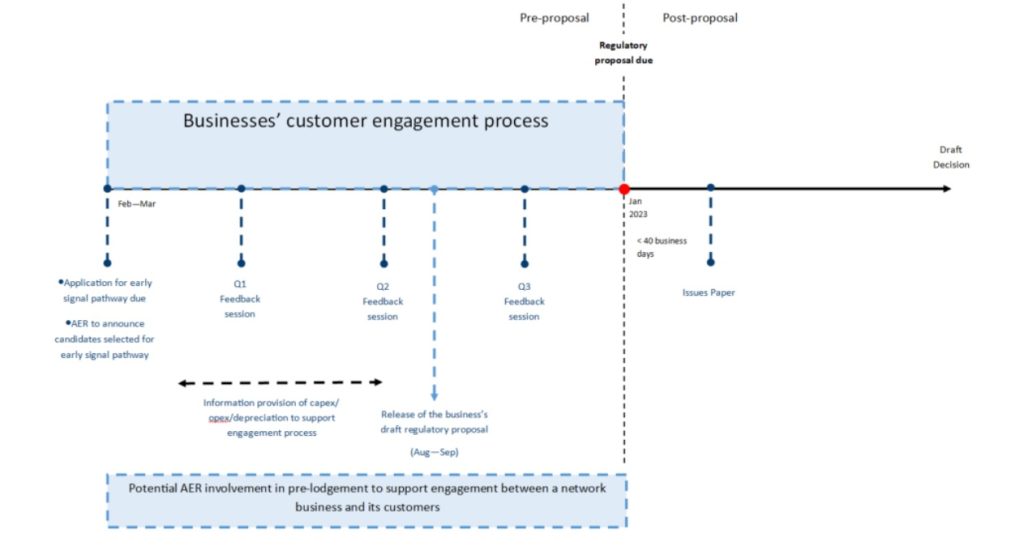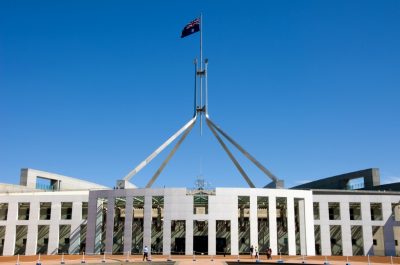Better resets in practice
By Lucy Moon
The Australian Energy Regulator (AER) released its industry-supported Better Resets Handbook (handbook) in late 2021, which seeks to improve the efficiency of the regulatory reset process and ensure better outcomes for customers. The first set of network regulatory proposals since the handbook’s release have now been lodged. We look at the process to date, and the preliminary outcomes of the early signal pathway.
What is a reset?
Revenue determinations, usually referred to as ‘resets’, occur every five years and determine how much revenue networks can recover from customers to deliver network services safely and reliably.
The regulatory determination process operates under a propose-respond model, which means that networks submit a regulatory proposal to the AER every five years for approval, and the AER makes a decision about it. It is an extensive process and requires networks to engage with their customers and stakeholders in an integrated way with regards to key inputs such as their proposed network and nonnetwork solutions, connections policies and proposed tariffs.
What is the Better Resets Handbook?
Australia’s energy system is undergoing a significant transition, occurring at grid scale and at the individual customer level, and significant network investment will be required to enable this.
The purpose of the AER’s handbook is to incentivise regulatory proposals that reflect consumer preferences and are capable of acceptance by the regulator. It is designed to deliver a more efficient regulatory reset process and result in better customer outcomes.
The handbook:
- sets out the AER’s expectations for consumer engagement and the key regulatory proposal topics of capital expenditure, operating expenditure, regulatory depreciation and tariffs, and
- outlines the AER’s process for when regulatory proposals meet expectations.
The handbook also introduces a new optional process into the standard regulatory determination process – the early signal pathway. This allows a network to get earlier formal feedback on aspects of its regulatory proposal – such as at the AER issues paper stage – in exchange for certain commitments from the network. Such commitments include the publication of a detailed draft regulatory proposal (before formal lodgment of the proposal) that demonstrates how the proposal meets the expectations set out in the handbook.
Through the early signal pathway there is strong engagement between the AER and the network business during the pre-lodgment phase, as shown in Figure 1 below. This early guidance supports the engagement process between networks and their customers and seeks to help networks submit a proposal that is capable of acceptance at the draft decision stage. This is then likely to reduce the work required at the later stages of the regulatory process (a network’s revised proposal and the AER’s final decision).

Handbook in practice
The first set of network regulatory proposals since the release of the handbook have now been lodged with the AER. These proposals cover the 2024-29 regulatory period and are from networks in New South Wales, Australian Capital Territory, Tasmania, and the Northern Territory.
The AER, in its initial assessment of all seven regulatory proposals, acknowledges the positive impact of the handbook in the formulation of the proposals, noting:
“In particular, we have seen a further step-up in the scope and quality of consumer engagement. A genuine commitment to consumer engagement is likely to lead to better quality proposals, that are in the long term interest of consumers.”
Essential Energy and Endeavour Energy in New South Wales were selected for the early signal pathway, with both businesses giving AER staff early access to data and information relevant to the expectations outlined in the handbook. The AER and the Consumer Challenge Panel in turn provided feedback prelodgment indicating where expectations were met or where further work was needed – a ‘red flag’-like process.
In the release of the issues papers, the AER has recognised that Endeavor Energy and Essential Energy have done well in meeting the handbook’s expectations and commended the businesses for their commitment and participation in the new process.
Both regulatory proposals have been assessed as high quality, with the AER’s initial assessment that, subject to further review in a few areas, it is inclined to accept Endeavour Energy’s proposal at the draft determination stage.
The AER also assessed Essential Energy’s proposal as demonstrating a very high standard of stakeholder engagement and expects it’s likely that more issues can be settled at the draft determination stage or potentially fully accepted.
The AER is now calling for interested stakeholders to make submissions on the AER’s issues papers and the networks’ regulatory proposals, and ENA encourages strong stakeholder engagement in the process.
The handbook represents an evolution in the AER’s approach to network regulation and, as each round of early signal pathway applications results in further refinements and improvements, it will result in a more efficient regulatory assessment process that, most importantly, delivers better outcomes for customers.

